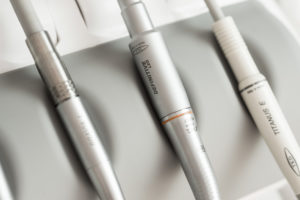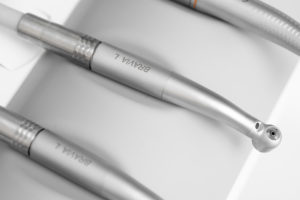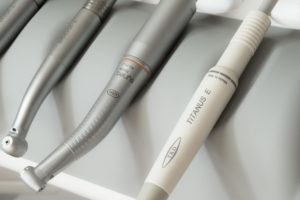TURBINE, CONTANGLE AND MICROMOTOR, 10 things you should consider when buying new handpieces.
Your dental headpieces represent a significant portion of your overall investment in dental equipment, and when operating properly, they contribute to a smoothly running practice.
Buying a new handpiece? Whether you’re a recent dental school graduate or planning to upgrade your current practice, here are 10 things you should consider when buying a new handpiece:
- Budget
This wouldn’t be a buying guide if we didn’t bring up your budget! The first step when considering any handpiece purchase is determining how much you’re prepared to spend. A single handpiece can range from a 250 Euro non-optic high speed to a 1500 Euro high-end electric attachment, so do your homework in advance to determine your limits. We believe that you should choose quality handpieces even if they are not cheap.
- Air or Electric Micromotor?
Dentistry is trending toward electric micromotor but air micromotor are still used in a lot of dental offices today. There are many advantages to electric micromotor including increased torque and speed control but the upfront investment is higher than a new motor air set up. In addition to the handpiece attachment, an electric setup includes a motor and a control interface that will increase your cost. Before making a sizable investment in your practice, consider newer technologies available electric micromotor.

- What are You Using Now?
What you’re using now should be a factor in your new handpiece even if you don’t like your current high speed turbine or contrangle. What do you like about your current handpiece? You definitely want to make sure your next purchase offers the same features and benefits that you like about your current one. If there’s something you don’t like about, you want to make certain your new handpiece resolves that issue.

- Current Connections
Unless you are starting from scratch or converting from an air-driven to an electric motor, you should consider your current connections. Most handpiece companies have proprietary connections between the high-speed air and coupler as well as between the motor and attachment. Will the new handpiece you are considering work with your existing equipment? Finding a new handpiece that works with your current setup could reduce your cost, increase efficiency and reduce confusion in your practice.
- Test Drive
You don’t have to rely only on printed literature, websites or videos before making a purchase decision. Get a feel for the handpiece first. Dental exhibitions are a great place to try multiple handpieces from different companies all in one location.
- Important Features to You
We can list a range of features you should consider, including weight, torque, sound level, water spray, head size and light intensity but ultimately, it depends on what you want. Make a list of features that are important to you and rank them by priority.
- Purpose
How are you planning to use the handpiece? The intended purpose of the handpiece should factor into your decision making. For example, if you are working with children, then head size and access is important. Doing third molar extractions? Then you should consider a 45-degree-angle handpiece. Are you mainly doing crown and bridge procedures? If so, Torque and durability should be key features in your next micromotor.

- Ask a Friend
An unbiased opinion can provide more insight than a catalogue. Talk to a peer or co-worker that you trust and find out what they’re using and what they like. Every person will have a different experience, but they may be able to provide you with insight for your next handpiece.
- Warranty
Warranties are an important insurance policy against unexpected repair costs. When looking at a new handpiece, consider the length of the warranty included. Compare warranty periods and find out which components are not covered by the warranty. Wear parts such as ball bearings are often not covered by the warranty.
- Service After the Sale
Once you assume ownership of a handpiece, you may still need additional support in the future. Is customer support available? What is the typical turnaround time on repairs? Is someone able to visit your office if you need additional assistance? Comprehensive service of medical devices retains their value and extends their service life. Qualified service centres can also offer prompt assistance in case of problems with the product.
We hope that all these tips will help you in finding your ideal handpiece.
Simple&Smart cooperates with the most known handpieces’ manufacturers from Europe. (W&H, Bien-Air, TKD, Dassym).
We offer a catalogue with a wide variety of handpieces and micro-motors. We are certain that you will find the best solution that will suits both your needs and budget. If you have any questions or suggestions, feel free to write to us!
